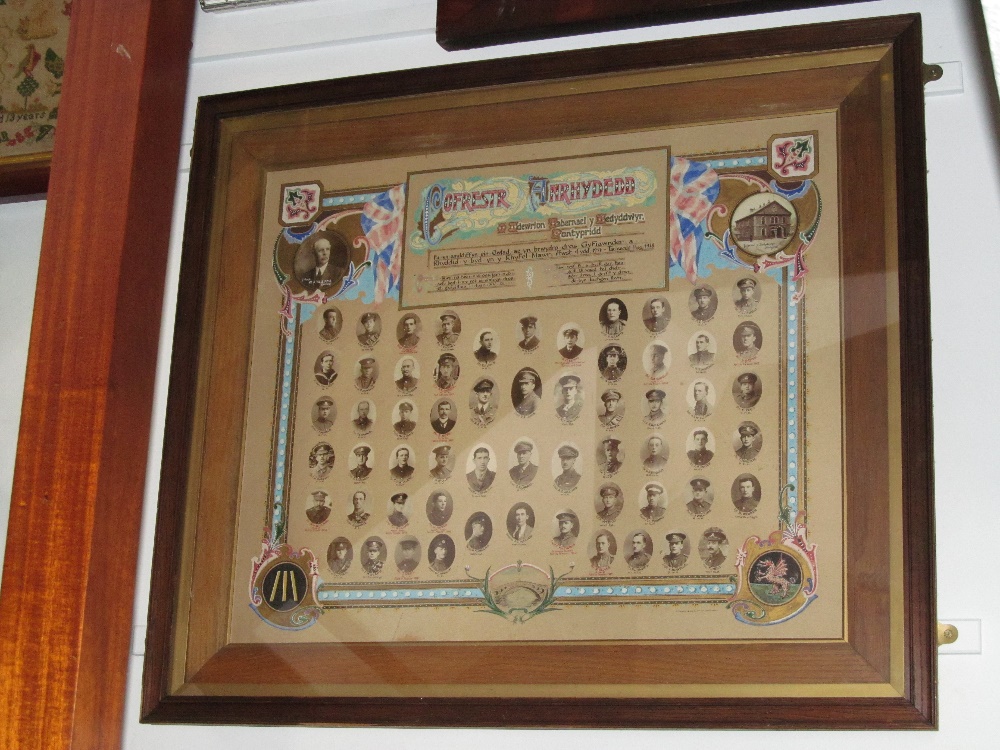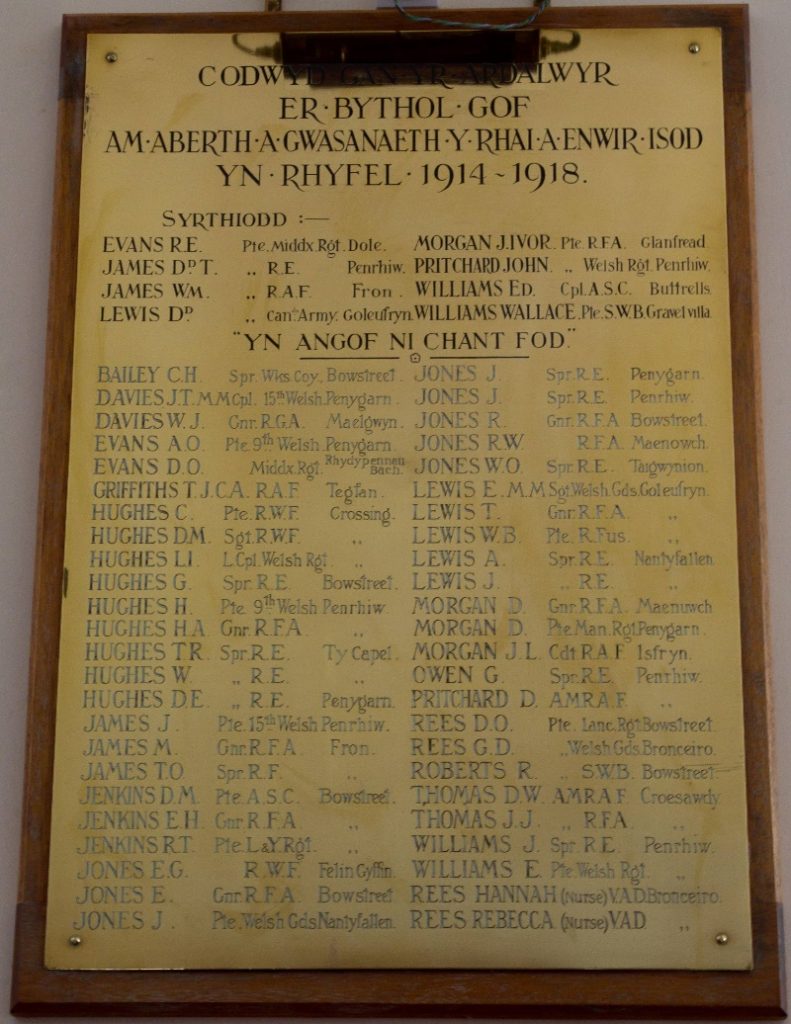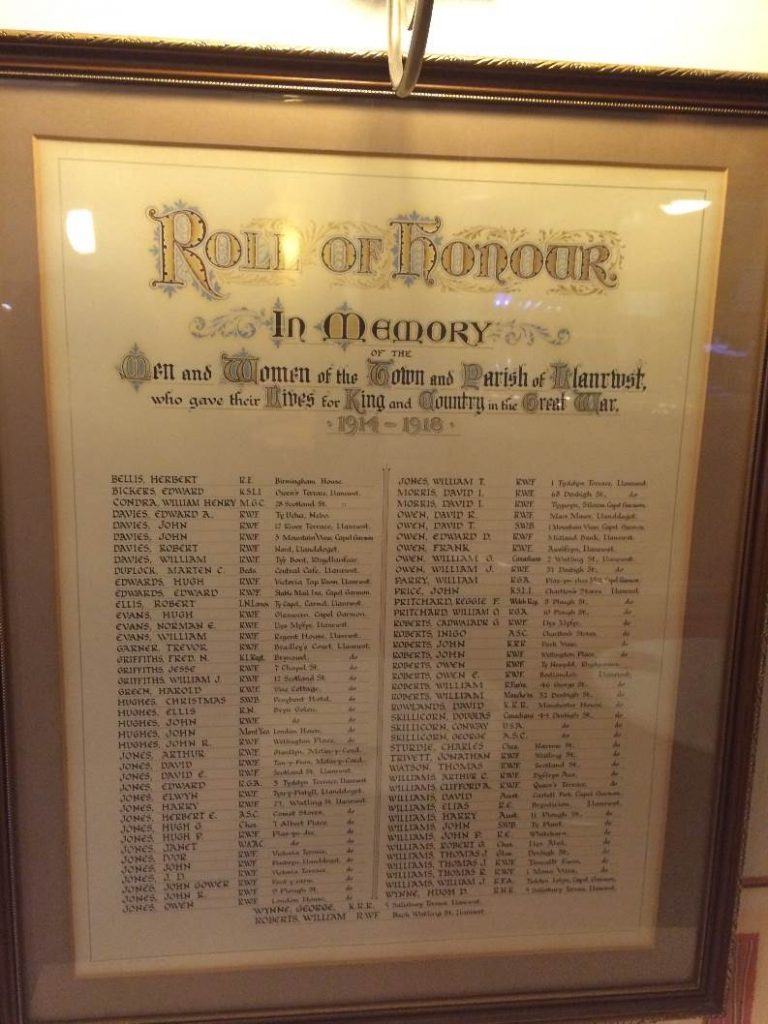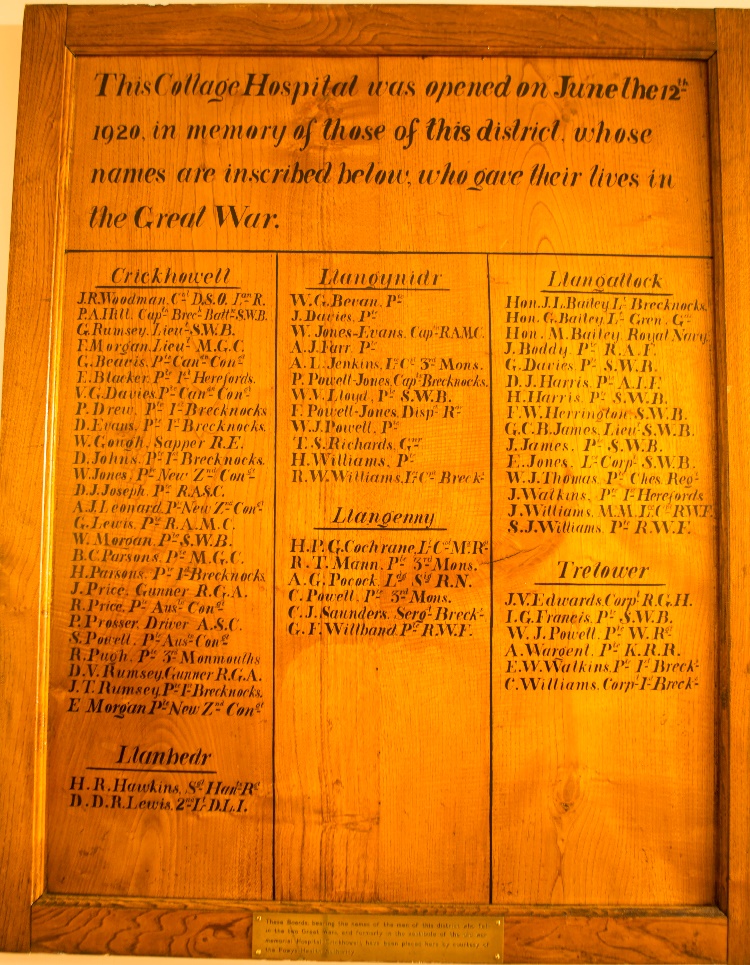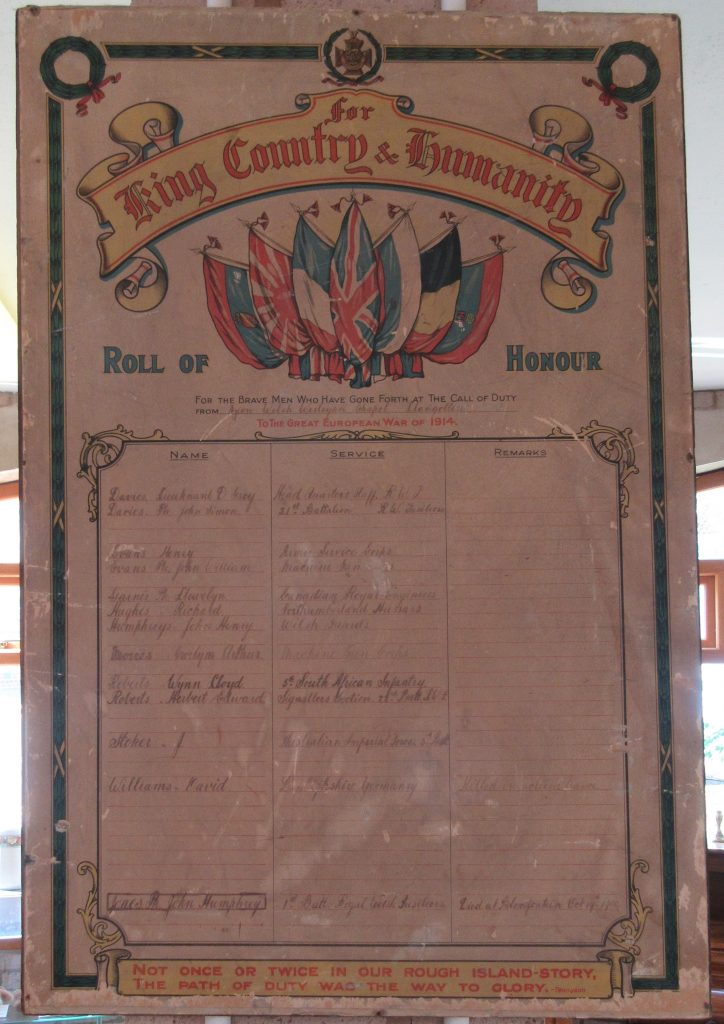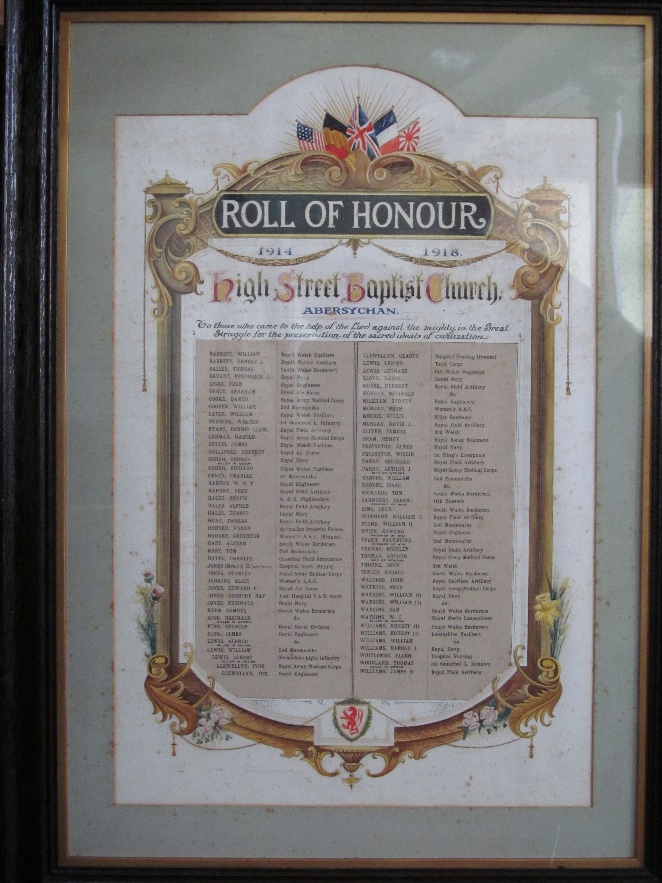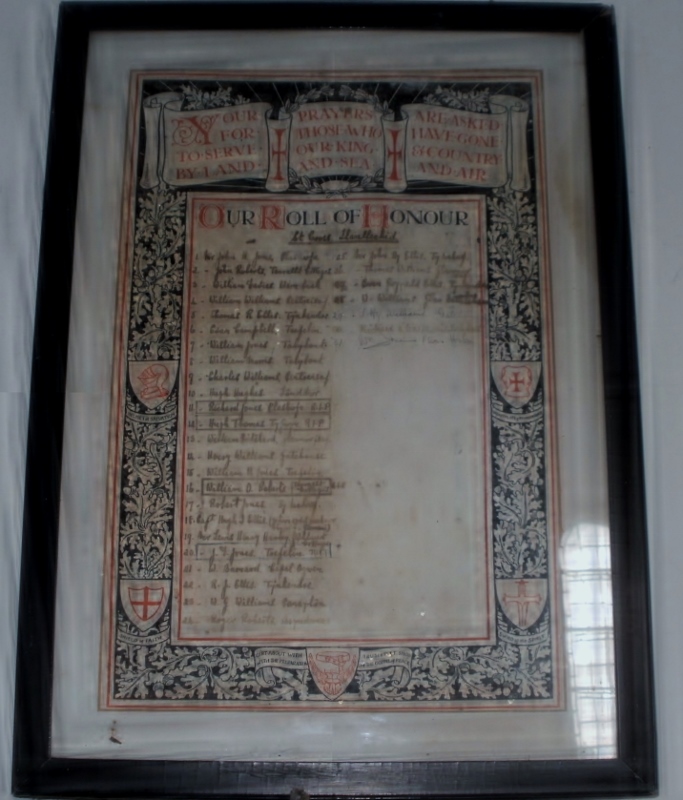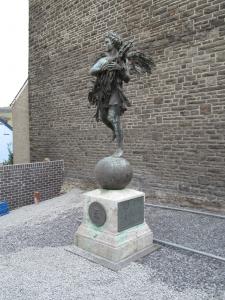Mapping Welsh Memorials to the Great War
A new resource has been developed which illustrates some of the material gathered on the First World War memorials and rolls of honour in Wales.
Funded by the Living Legacies 1914-18 Engagement Centre, the Centre for Data Digitisation and Analysis at Queen’s University Belfast has worked with the information gathered by the ‘Welsh Memorials’ project, and also the Powys War Memorials Project, to create a map showing where these memorials are to be found. (The black dots are from the Powys project: the others are from ‘Welsh Memorials’).
Most of the memorials considered here were displayed in chapels, but there are also examples from churches, schools, clubs and workplaces.
These objects of commemoration can tell us a lot about how individual communities were affected by the war, and how they chose to remember the events of 1914 – 1919, and those whom they lost on the battlefield. They vary greatly in their design, in their choice of words to describe those who are commemorated, in the information they contain, and in how inclusive they were in their choice of men and women to remember and honour.
Whilst some rolls of honour feature very militaristic imagery, some memorials appear far more ambivalent about the necessity of war. One obvious example of these two contrasting perspectives can be found by comparing the choice of verse in the Tabernacle at Pontypridd (left), and Bethel Chapel in Llangyfelach, Swansea (right).
The Tabernacle in Pontypridd extolls the virtues of dying for one’s country – the poem is from the perspective of a mother who tells her son that “Dy fam wyf fi, a gwell gan fam, It golli’th waed fel dwfr, Neu agor drws i gorff y dewr, Na derbyn bachgen llwfr.” (“I am your mother, and a mother would rather you spilt your blood like a flood, or to open the door to the body of the brave, than accept a cowardly boy”). Bethel Chapel in Llangyfelach, on the other hand, quotes from the eulogy to Hedd Wyn (a Welsh poet who died at Passchendaele) by R. Williams Parry – “Garw rhoi’u pridd i’r briddell, mwyaf garw marw ’mhell” (It is grievous to give their remains to the earth, and harder still because they are far away).
There is also a wide range in regards to what the communities decided to record about those who were serving with the armed forces. Some, as in the Tabernacle (see above) included photographs. Others only recorded initials and surnames. Whilst some memorials and rolls of honour stated where the soldiers and sailors lived, others chose to list their ranks and regiments, or the date and place where they fell.
The map shows which areas chose to commemorate women who participated in the war effort. It seems that roughly a third of the chapel memorials in Wales include the names of women who served as well as men. Some of these are in clusters – such as those in the Pontypool area. This map resource makes it easy to identify these clusters. Very often the women’s names were separated out from the men’s as is the case in Capel-y- Garn, Bow Street, near Aberystwyth.
Sisters Hannah and Rebecca Rees are both listed as nurses on the right-hand bottom corner of the list. Occasionally women were listed among the fallen, as was the case with Janet Jones from Llanrwst, who was a Quarter Mistress with the Women’s Royal Air Force. On the roll of honour at the British Legion in Llanrwst, she is listed among the fallen men, in alphabetical order.
Another feature of this map is that it highlights which memorials and rolls of honour commemorate those men who served with overseas forces. Most men served with either the Canadian or Australian forces, although smaller numbers served with the Ghurkhas, New Zealanders and South Africans. The memorial which records the greatest number of men who fell whilst fighting with overseas forces is that of Crickhowell War Memorial Hospital. Out of a total of 67 men who fell whilst fighting in the First World War, 8 of them did so whilst serving with overseas forces (two Canadians, three New Zealanders and three Australians). Capel Seion in Llangollen also has a high proportion of men who served with overseas forces – 3 out of 12, that is, a quarter of those who served. One fought with the Australian Forces, another with the Canadians and the third with the South African Army.
Both Crickhowell and Llangollen are fairly rural areas of Wales, and perhaps the map of those who served with overseas forces can tell us something about the patterns of migration from Wales at the turn of the twentieth century. It also tells us how those who did emigrate maintained their links with the old country. One of those from Llangollen had emigrated to Canada a decade before the outbreak of war, but he was still considered enough of a Llangollen boy to be recorded on their Roll of Honour.
The memorial at High Street Baptist chapel, Abersychan, brings together many of the themes highlighted in this resource. The Roll of Honour has the dedication ‘To those who came to the help of the Lord against the mighty in the Great Struggle for the preservation of the sacred ideals of civilization’, showing that at the time of the memorial’s commission there was no question of who was in the right in the war. Eight men who died are listed, along with 70 men and 7 women who served. One of the men was with the Australian forces, and one with the Canadian Field Ambulance.
So far the Welsh Memorial Project has recorded over 160 memorials and almost a hundred rolls of honour from across Wales. These objects range from rough drafts of rolls of honour, such as this roll of honour from St Cross Church in Llanllechid, near Bangor, to statues such as this one from the Tabernacle in Aberystwyth, which was designed by the renowned Italian sculptor Mario Rutelli. This online map resource highlights the different ways of commemorating those who served from across Wales. It shows where rolls of honour were made, and those areas where memorials alone were more common. It gives a snapshot of the patterns of migration at the turn of the century, and it shows which communities decided that the contribution of local women to the war effort was worth commemorating.
g.h.matthews February 21st, 2018
Posted In: Uncategorized

